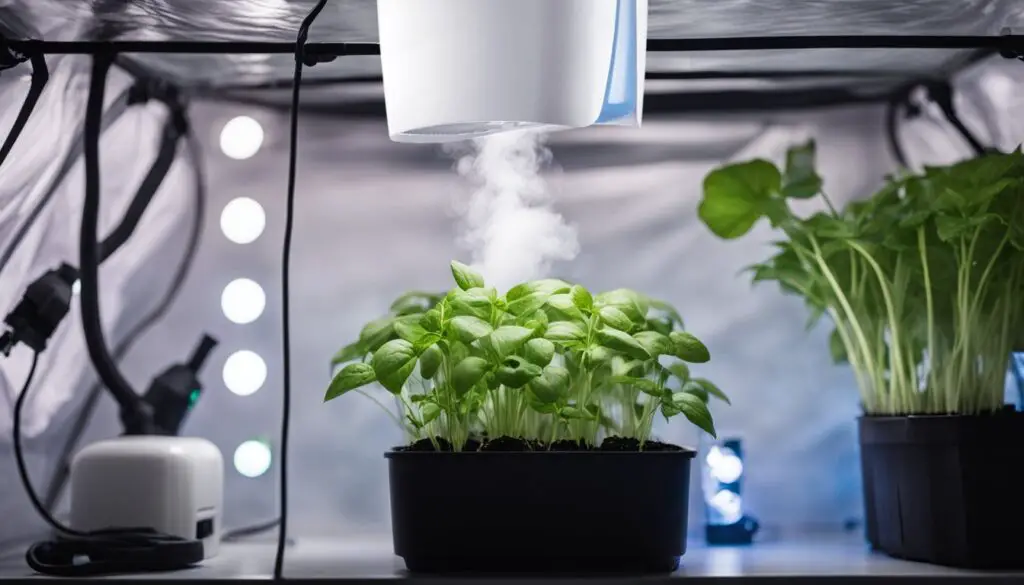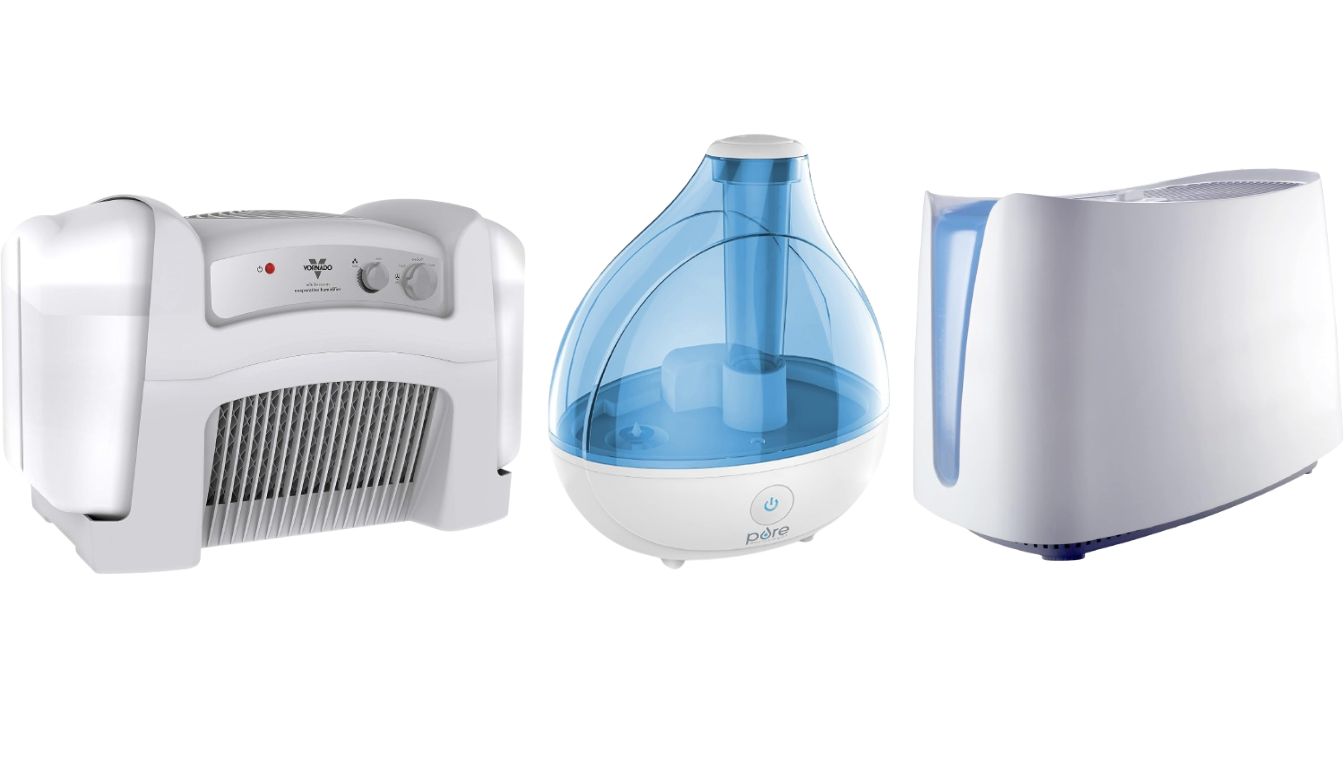Creating the right environment for indoor plants is essential, and humidity plays a crucial role in their health. The ideal humidity level for most plants falls between 40% and 60%. Too little humidity can lead to wilting and stress, while excessive moisture can cause mould and mildew. This is where a good grow tent humidifier comes into play, helping to maintain optimal humidity levels for healthy plant growth.
Choosing the best humidifier can be overwhelming with the variety of options available, including ultrasonic, evaporative, and steam models. Each type has its advantages, and understanding these differences is key to selecting the right one for your setup. In this article, we’ll break down the best grow tent humidifiers, providing practical recommendations to help you create the perfect environment for your indoor garden.
Specific Humidifier Recommendations – Types of Humidifiers
Finding the Best Grow Tent Humidifier
When it comes to choosing the best humidifier for your grow tent, the options can feel a bit overwhelming. But don’t worry! I’m here to help you navigate through the sweet selection of humidifiers, breaking down the different types and giving you some solid recommendations that will keep your plants happy and thriving.
First, let’s chat about the different types of humidifiers you might encounter. Each has its own unique features. Knowing their strengths can help you pick the right one for your gardening needs.
Ultrasonic Humidifiers – Get Yours Pure Enrichment MistAire Here
Ultrasonic Humidifiers are the quiet ninjas of the humidifier world. They use high-frequency vibrations to create a fine mist, which means they can quickly add moisture to the air without making much noise. This is perfect for those late-night gardening sessions when you don’t want to wake the whole household. A popular choice is the Pure Enrichment MistAire, which is compact, efficient, and easy to clean. Just remember to use distilled water to avoid that pesky mineral buildup!
Evaporative Humidifiers – Get Your Vornado EVAP40 Here
Evaporative Humidifiers are like the old-school fans of the group. They work by drawing air through a wet wick, allowing it to evaporate and increase humidity naturally. These units tend to be self-regulating, meaning they won’t over-humidify your grow tent, making them a great choice for beginners. One solid option is the Vornado EVAP40, which offers excellent coverage and is perfect for larger grow tents. Just keep in mind that they require regular maintenance, like changing the wick, to keep things running smoothly.
Stem Vaporizes – Get Your Honeywell Here
Steam Vaporizers are the heavyweights in this category. They boil water to produce steam, which can then be cooled down before it enters the air. While they can quickly raise humidity levels, they also consume more electricity and can be a bit noisy. The Honeywell is a great steam vaporizer that’s easy to use and clean, but be cautious with placement; you don’t want to accidentally create a sauna for your plants!
Choosing the Right Humidifier for Your Setup
Now that you have a better understanding of the types of humidifiers, it’s time to consider your specific needs. If you have a small grow tent, an ultrasonic model like the Levoit Classic 160 might be just the ticket. It’s compact, affordable, and has a built-in night light for those midnight plant checks. For larger setups, the Vornado EVAP40 will keep the air evenly humidified without breaking a sweat.
If you’re dealing with particularly dry conditions or have high humidity-loving plants, you might want to invest in a steam vaporizer. Just be sure to monitor the humidity levels closely, as it can crank up the moisture quickly!
Integration with Other Equipment – Best Grow Tent Humidifier

Creating a Cohesive Environment
When it comes to indoor gardening, maintaining the right humidity is just one piece of the puzzle. Think of your grow tent as a well-orchestrated symphony, where every instrument—humidity, temperature, light, and airflow—must work in harmony. Integrating your humidifier with other environmental control systems, like thermostats and dehumidifiers, is crucial for achieving that perfect balance.
Humidifiers and Thermostats: A Dynamic Duo
The thermostat regulates the temperature, ensuring your plants stay cosy without overheating, while the humidifier keeps moisture levels just right. By setting your thermostat to maintain a stable temperature range, you can prevent your humidifier from working overtime, which can lead to excessive humidity. Many modern thermostats even come with smart features that allow you to monitor and adjust conditions remotely, making it easier than ever to create an optimal environment for your plants.
The Role of Dehumidifiers – Best Grow Tent Humidifier
Now, let’s not forget about the dehumidifier. If your grow tent tends to get too humid—especially during the flowering stage of your plants—a dehumidifier can help keep moisture levels in check. By strategically placing both the humidifier and dehumidifier, you can create a responsive system that adjusts to the needs of your plants. For instance, if the humidity rises above your target range, the dehumidifier kicks in to bring it back down, while the humidifier ensures it doesn’t drop too low during drier periods.
Common Humidity-Related Issues – Best Grow Tent Humidifier
Root Rot: The Silent Killer – Best Grow Tent Humidifier
This condition occurs when the roots sit in overly wet soil, creating a perfect environment for fungi to thrive. If your humidity is too high, combined with poor drainage, your plants can quickly succumb to this issue. To prevent root rot, ensure your pots have adequate drainage holes and avoid overwatering. Using a humidity meter can help you keep tabs on moisture levels in the soil, allowing you to adjust your watering schedule accordingly. Remember, healthy roots are the foundation of healthy plants!
Pest Infestations: Uninvited Guests
High humidity can also roll out the welcome mat for pests like spider mites, aphids, and fungus gnats. These little critters thrive in moist environments, making your grow tent their ideal home. If you notice tiny webs or sticky residue on your plants, it’s time to take action. To prevent infestations, maintain a balanced humidity level and ensure good airflow within your tent. Introducing beneficial insects, like ladybugs or predatory mites, can also help keep the bad guys at bay. And if you do spot pests, don’t panic! A gentle spray of insecticidal soap can be an effective way to manage the situation.
Nutrient Uptake Issues: The Hungry Plants – Best Grow Tent Humidifier
Humidity levels can also impact how well your plants absorb nutrients. Too much moisture can lead to nutrient lockout, where roots struggle to take up essential elements like nitrogen, phosphorus, and potassium. This can manifest as yellowing leaves or stunted growth—not the look you want for your indoor garden! To combat this, keep your humidity in check and ensure your soil has good drainage. Regularly testing your soil’s pH can also help you identify any nutrient uptake issues before they escalate.
Solutions and Preventative Measures
To keep your plants happy and healthy, it’s essential to monitor humidity levels and make adjustments as needed. Investing in a reliable hygrometer can help you track moisture in the air, while a good grow tent humidifier can add or remove moisture as necessary. Regularly check your plants for signs of stress, such as wilting or discolouration, which can also alert you to potential humidity-related issues early on.
Before You Go – Actionable Steps to Optimize Grow Tent
To help you hit the ground running, here’s a handy checklist to keep in mind as you set up your grow tent:
- Choose the Right Humidifier: Select a humidifier that fits your space and needs, whether it’s ultrasonic, evaporative, or steam. Consider the size of your grow tent and the specific humidity requirements of your plants.
- Monitor Humidity Levels: Invest in a reliable hygrometer to track humidity. Aim for that sweet spot between 40% and 60% for most plants. Adjust your humidifier settings accordingly.
- Integrate with Other Equipment: Pair your humidifier with a thermostat and, if necessary, a dehumidifier to create a balanced environment. Make sure these devices work together to maintain consistent conditions.
- Check for Signs of Stress: Regularly inspect your plants for any signs of stress, such as wilting, yellowing leaves, or pest infestations. Early detection is key to preventing bigger problems down the line.
- Adjust Watering Practices: Be mindful of your watering schedule. Overwatering can lead to root rot, especially in high humidity. Always check soil moisture before adding more water.
- Maintain Cleanliness: Keep your grow tent clean and free from debris. A tidy environment helps prevent pests and diseases from taking hold.
Take Action Now! Best Grow Tent Humidifier
Now that you have this checklist, it’s time to put your knowledge into action. Setting up your grow tent with the right humidity control will not only enhance your plants’ health but also boost your confidence as a gardener. So roll up those sleeves, grab your humidifier, and get started on creating the perfect indoor oasis for your plants. Don’t forget to add The Herb Prof to your favorites so you don’t miss any new updates and articles, happy gardening!
References – Best Grow Tent Humidifier
Little Herb Encyclopedia, by Jack Ritchason; N.D., Woodland Publishing Incorporated, 1995
The Ultimate Healing System, Course Manual, Copyright 1985, Don Lepore
Planetary Herbology, Michael Tierra, C.A., N.D., Lotus Press, 1988
Handbook of Medicinal Herbs, by James A. Duke, Pub. CRP Second Edition 2007
The Complete Medicinal Herbal, by Penelope Ody, Published by Dorling Kindersley
Check the Following Articles!
Brown Fruits Name: Tasty Varieties You Need to Try Now!
Propagating African Violets in Water
How to Protect Plants From Slugs And Snails?

